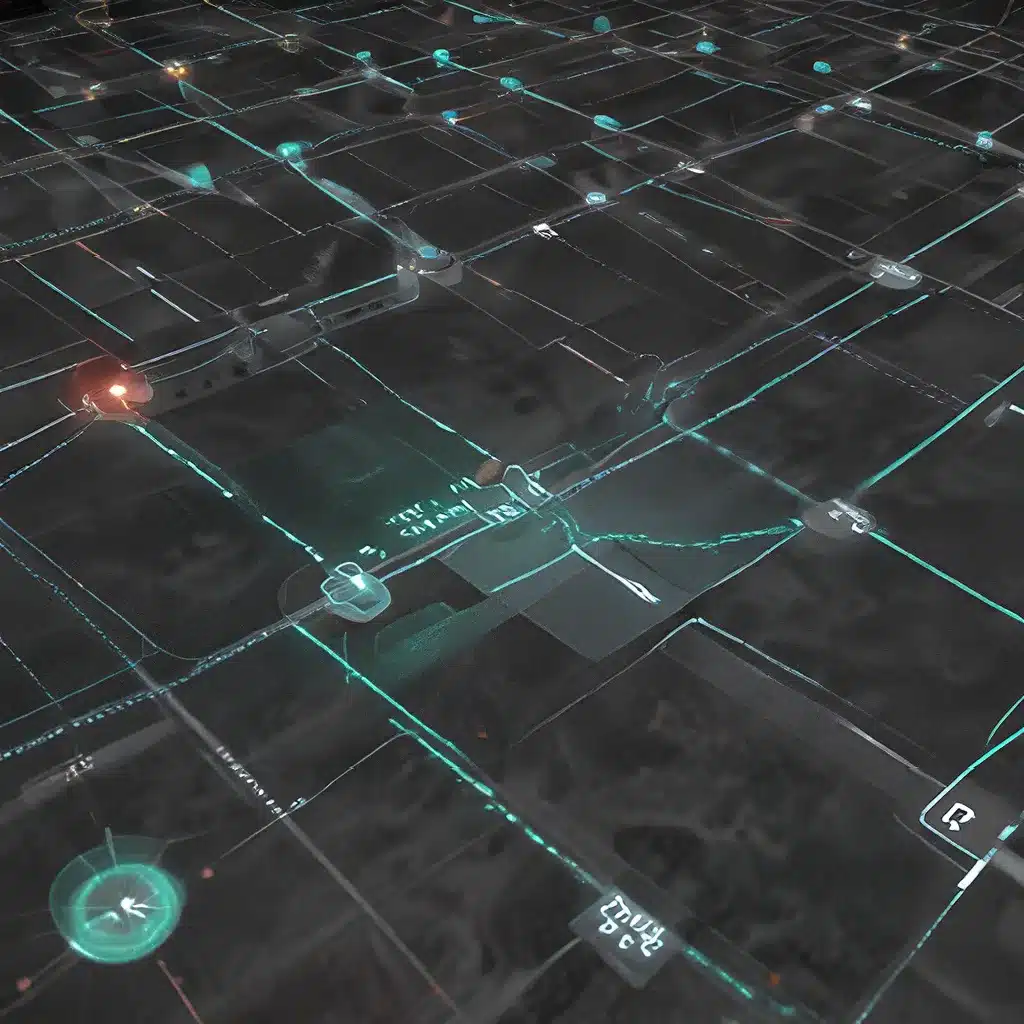
Empowering Sensor Networks with Adaptive Algorithms
In the rapidly evolving landscape of sensor networks and the Internet of Things (IoT), the ability to detect anomalies and maintain comprehensive situational awareness has become paramount. As these technologies become increasingly ubiquitous, the demand for robust, adaptive, and intelligent sensor fusion algorithms has grown exponentially.
Sensor networks, at their core, rely on the seamless integration of multiple sensing modalities to gather and process data from diverse sources. Adaptive sensor fusion algorithms play a crucial role in this process, enabling sensor networks to adaptively combine and analyze sensor data, ultimately enhancing anomaly detection and providing a more comprehensive understanding of the environment.
Improving Anomaly Detection through Adaptive Fusion
Anomaly detection is a fundamental capability of sensor networks, allowing for the identification of unexpected or unusual patterns that may indicate system malfunctions, security breaches, or emerging threats. Conventional anomaly detection approaches often rely on static, rule-based algorithms that struggle to adapt to the dynamic nature of sensor networks.
Adaptive sensor fusion algorithms address this challenge by continuously learning and evolving to better detect anomalies. These algorithms leverage advanced machine learning techniques, such as neural networks, Bayesian inference, and fuzzy logic, to adaptively fuse data from multiple sensor modalities, including visual, thermal, acoustic, and motion sensors.
By adaptively combining these heterogeneous data sources, adaptive sensor fusion algorithms can identify complex patterns and relationships that may be missed by individual sensors. This enhanced anomaly detection capability is particularly valuable in mission-critical applications, where early identification of potential issues can mean the difference between success and failure.
Enhancing Situational Awareness through Adaptive Fusion
In addition to improved anomaly detection, adaptive sensor fusion algorithms play a crucial role in enhancing situational awareness within sensor networks. Situational awareness refers to the ability to perceive, comprehend, and project the current state of a dynamic environment, which is essential for informed decision-making and effective response.
Adaptive sensor fusion algorithms can continuously monitor and integrate data from a wide range of sensors, providing a comprehensive and up-to-date understanding of the operational environment. This dynamic, holistic view enables sensor networks to anticipate and respond to changing conditions more effectively, ultimately leading to improved decision-making and mission success.
Sensor networks equipped with adaptive fusion algorithms can be deployed in a variety of mission-critical applications, such as:
- Disaster response: Monitoring and integrating data from multiple sensors to provide real-time situational awareness and facilitate coordinated emergency response.
- Critical infrastructure protection: Detecting and responding to security threats and system anomalies in critical infrastructure, such as power grids, transportation networks, and water treatment facilities.
- Environmental monitoring: Combining data from various environmental sensors to track and predict changes in weather patterns, air quality, and ecological conditions.
- Autonomous vehicles: Fusing sensor data from cameras, LiDAR, radar, and other modalities to enhance object detection, localization, and decision-making for autonomous vehicle navigation.
Addressing Security Challenges in Adaptive Sensor Fusion
As sensor networks and IoT systems become increasingly interconnected and data-driven, the security and resilience of adaptive sensor fusion algorithms become paramount. Malicious actors may attempt to manipulate sensor data, disrupt communication channels, or exploit vulnerabilities in the fusion algorithms themselves, leading to false alarms, missed anomalies, and potentially catastrophic consequences.
To address these security challenges, researchers and practitioners are focusing on developing secure and resilient adaptive sensor fusion algorithms. This includes:
- Secure data acquisition and transmission: Implementing robust encryption, authentication, and data integrity mechanisms to protect sensor data from tampering and unauthorized access.
- Anomaly detection for sensor data: Employing machine learning-based techniques to detect and mitigate sensor spoofing and data manipulation attempts.
- Resilient fusion algorithms: Designing adaptive fusion algorithms that can gracefully degrade in the face of sensor failures or partial data corruption, ensuring continued situational awareness and anomaly detection.
- Trusted and verifiable fusion outputs: Providing cryptographic proofs and integrity checks to ensure the trustworthiness and non-repudiation of the sensor fusion outputs.
Powering Adaptive Sensor Fusion with Energy-Efficient Designs
As sensor networks and IoT systems proliferate, the energy consumption of adaptive sensor fusion algorithms becomes a critical design consideration. Many sensor network deployments, particularly in remote or hard-to-access locations, rely on limited power sources, such as batteries or energy harvesting systems.
To address this challenge, researchers and engineers are developing energy-efficient adaptive sensor fusion algorithms. These designs leverage techniques such as:
- Selective sensor activation: Intelligently activating only the necessary sensors based on the current operational context, reducing overall power consumption.
- Adaptive data processing: Dynamically adjusting the computational complexity and sampling rates of the fusion algorithms to match the available power budget.
- In-sensor processing: Performing partial data processing and feature extraction at the sensor level, reducing the amount of data that needs to be transmitted to the fusion center.
- Distributed fusion architectures: Implementing decentralized or hierarchical fusion approaches to distribute the computational load and minimize the energy-intensive transmission of raw sensor data.
By incorporating these energy-efficient design principles, sensor networks can maximize the operational lifetime of their adaptive fusion capabilities, ensuring reliable and sustainable anomaly detection and situational awareness in a wide range of applications.
Conclusion: The Future of Adaptive Sensor Fusion
As the world becomes increasingly interconnected and sensor-driven, the role of adaptive sensor fusion algorithms in enhancing anomaly detection and situational awareness will only grow in importance. These advanced algorithms, powered by the latest advancements in machine learning, signal processing, and distributed computing, are poised to transform the way we perceive, understand, and respond to the dynamic environments around us.
From mission-critical applications to everyday IoT systems, adaptive sensor fusion will be a cornerstone of the sensor network revolution, empowering us to make more informed decisions, anticipate and mitigate emerging threats, and harness the full potential of the Internet of Things. As the field continues to evolve, we can expect to see even more innovative and resilient adaptive fusion algorithms that push the boundaries of what is possible in the world of sensor networks and IoT.